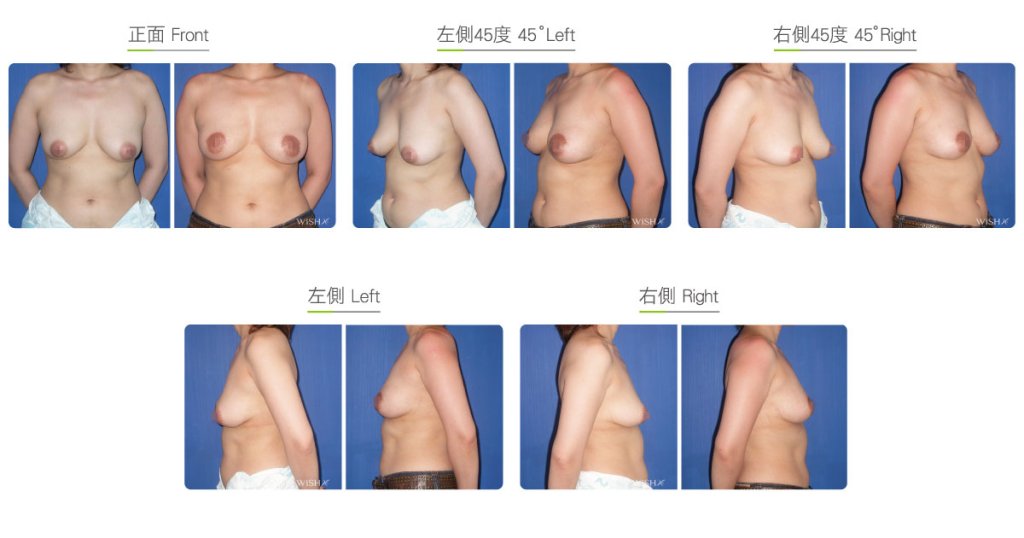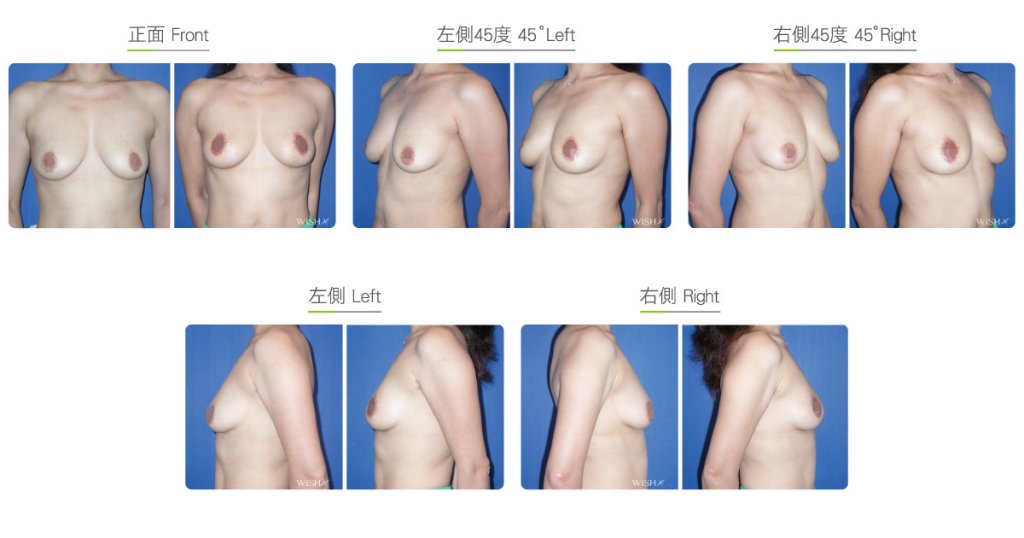Areolar Breast Lift
Patients with B or C cup ptotic breasts who are not interested in augmentation mammoplasty can choose areolar breast lift to correct the problem. This procedure repositions the areola and nipples upward to lift saggy breast tissues, thus the name areolar breast lift. A periareolar incision is made to excise some mammary tissue in the upper half of the breasts. Then, the lower half of the breast tissue is fixed and stitched to the excised space at the top. Finally, the relatively loose periareolar skin is partially removed to have the combined effect of areola reduction.
This surgery is limited to the periareolar tissue. Although the procedure is less invasive and implants are avoided, the effect of ptosis correction is limited, with the rate of correction normally only at 60%–70%. It is ideal for patients who desire a natural look and local improvement. The effects of surgery last for as short as 2–3 years or as long as 6–8 years, depending on the patient’s age and breast conditions. If longer lasting results are desired, then partial breast reduction can be performed in conjunction to reduce breast weight. Another characteristic of this procedure is that the incision is periareolar; thus, areola reduction can be achieved at the same time.

Surgical conditions
Duration
- Type of anesthesia: IV sedation
- Type of incision: Periareolar incision
- Recovery: Within 1–2 days
- Removal of stitches: 10–14 days
General instructions
No food and water on the day of surgery
- Compression or massage of the breasts with force should be avoided for 3 months postoperatively.
- Patients need to wear a supportive bra to sustain breast weight.
- Scar care should be continued for 3–6 months.
Ideal candidates
- Those with grade 1–3 ptosis
- Those with B to C cup ptotic breasts
- Those with breast atrophy or ptosis but who are not interested in breast implant placement
- Those with low nipples/areola due to breast atrophy
- Those who would like to correct both areola hypertrophy and breast ptosis together
Possible complications
- Areolar scars
- Incomplete correction
Surgical advantages
-
Breast augmentation is not required to improve ptosis.
-
No complications associated with implants, such as capsular contracture.
-
Less invasive and faster recovery.
-
Areola reduction can be performed at the same time.
Surgical drawbacks
-
Possible periareolar scar.
-
Only regional adjustment and correction of ptotic breasts
-
The results can only be 60%–70% of those achieved with augmentation mammoplasty.
-
Sustainability of the result varies


